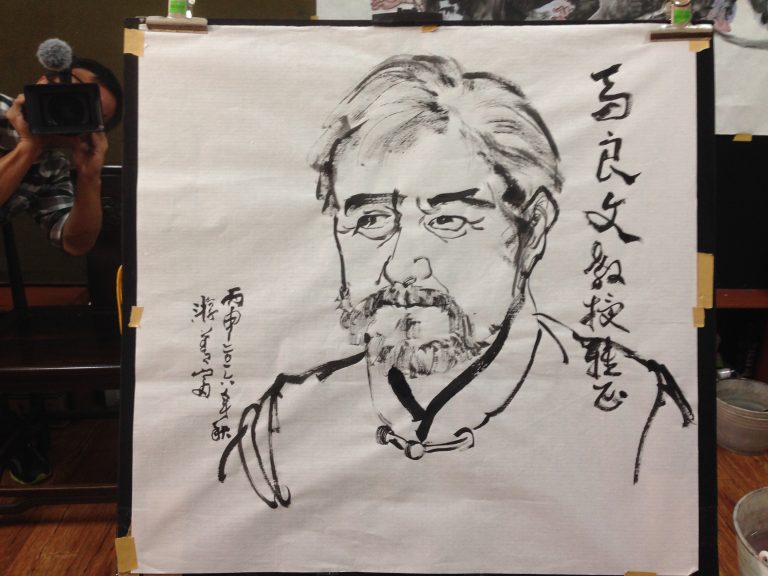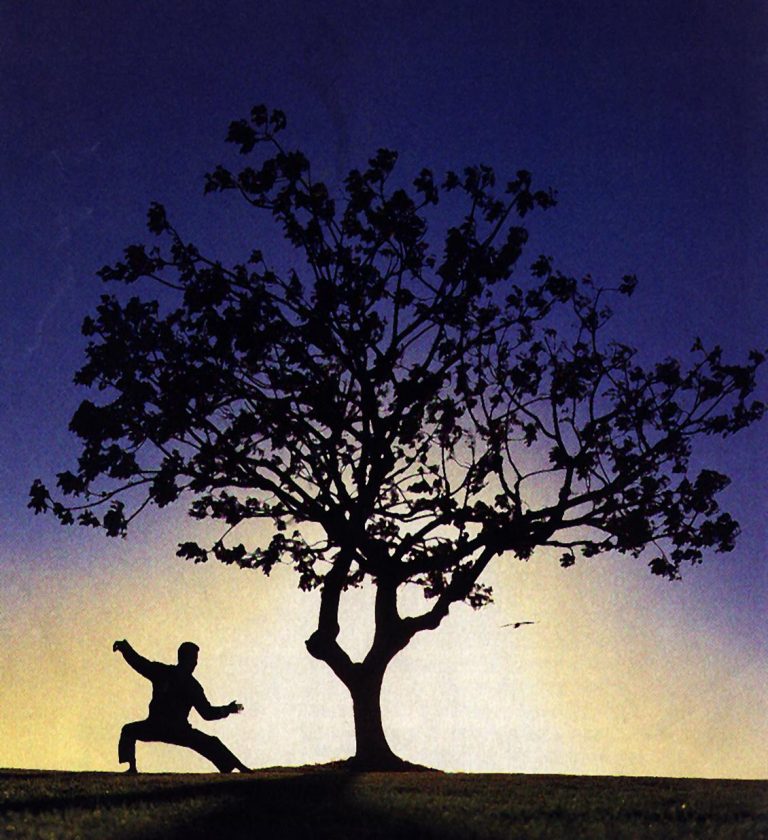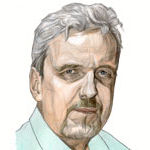Интервью Малявина журналу JAT
Boundless Trust in Life
The reason why renowned Russian sinologist Vladimir Vyacheslavovich Malyavin was recently a guest of Belgrade was twofold: to attend the Belgrade Faculty of Philology conference on China, and to promote the Serbian edition of his book China: History, Culture, Religion, issued by NNK Internacional publishers.
By Mila MilosavljevićåPhoto by Aleksandar Andjić
Vladimir Vyacheslavovich Malyavin arrived in Belgrade from Taiwan, where for more than ten years he has headed the Slavic Studies department at the Tamkang University, the country’s largest private university. Malyavin has taught at universities in Russia, Japan, the US, France and China and has practically travelled the world pursuing his studies. His visit to Serbia last year was his first.
Mr. Malyavin, what holds the most fascination for you in Chinese culture?
– Its boundless trust in life, which, strange to say, leads the Chinese to abandon everything in favor of life per se. The solid integrity of the Chinese weltanschauung is fascinating: knowledge, authority, governance, health, prosperity and success in China are inseparable.
Wherein lies the main difference between Western and Chinese cultures?
– Chinese civilization does not recognize any antagonism between spirit and matter. In Chinese tradition, reality is not to be found in matter but in events, in transformation, in the boundaries of existence. This principle is in fact more profound than any Western principle. This is where the differences between European and Chinese thought originate, and it accounts for the remarkable vitality of Chinese culture. Besides, there is no such thing as Western individualism among the Chinese, because the personality is divided, on the one hand, into a network of social relations (so-called manifestation, literally, man’s face) and an inner depth of knowledge and the corporeal presence in the world, on the other (in literal translation from Chinese: flesh and bones). What keeps the Chinese together is not common ideas, not even common actions but a common body, i.e., the commonality of our bodily experience.
What are your impressions about Serbia? Is there something that makes it special?
– Do not think that I am handing out compliments, but Serbia – a country of wonderful landscapes and fantastic monasteries – has what it takes to attract tourists. Serbian churches are characterized by austerity and modesty, something I think lends perfect expression to the soul of your nation – outgoing, uncorrupted almost to naivety, if I may be so bold to say. This is why its people are Serbia’s greatest asset. Many foreigners arrive here with prejudices about the Serbs, whom they often portray as belligerent, much too proud and vainglorious. However, such descriptions do not correspond to the truth. I am continually surprised by the Serbs’ cordiality, hospitality and wealth of emotion. In this respect, Serbia differs pronouncedly from Western European countries. I was fascinated to learn that younger Serbs speak excellent English, are hard-working and entertain ambitious plans for the future. Perhaps, this may partly be explained by the serious challenges to which Serbia has been exposed over the past ten odd years.
Despite many engagements, you have managed to travel around Serbia and Montenegro. What impressed you the most?
– As someone who comes from Russia, where apart from the Caucasus there are practically no mountains, places such as Mt. Zlatibor and Mokra Gora appear as if they have come from some fairytale. I find snow-covered mountain villages, rapid streams, delightful gorges and ancient monasteries that cleverly blend into the environment, quite captivating. The beauty of the Montenegrin coastline is overwhelming, albeit in quite a different way; the tranquility of the Boka Kotorska Bay, or the moving spirituality of the Ostrog Monastery, where the relics of a highly potent saint are kept. You would be surprised if I told you that I find this monastery, carved into the rock high above a chasm, highly redolent of Daoist holy mountains in China. They, too, were built on mountain cliffs with steep slopes and worn-out sloping paths… the pilgrims climb barefoot.
In your book, you set out that Daoism is central to the worldview of the Chinese. Many would challenge this point?
– Daoism is as much a philosophical system and religion as it is a cultural tradition – even science. All these aspects of human practice are organically merged and, in my view, most fully express the spirit of the Chinese people – a principle in which entirety is to be found in diversity. Such integrality is based on transformation. For a Chinese, life is the world’s creative force manifested in an endless series of shapes. This is why the concept of reality in China does not imply things, ideas, forms, but transmutation, transition from one to another. Chinese culture, therefore, fosters this sense of inner boundaries of experience; teaches us to appreciate diversity in our existence. Monasteries hanging over chasms such as Ostrog are a fine illustration of the principle embodied in the Chinese worldview because when we stand above a chasm we are very clearly aware of that something ‘different’ and ‘other’ in our life and are conscious that our entire life is in fact standing on the edge of a cliff. It is precisely this sensation that stirs us to spiritual improvement.
How did this interest in China begin?
– While still a schoolboy, I loved to study everything complex and difficult to grasp. Also, living in a communist country such as the Soviet Union, I looked for an area that would give me maximum freedom in terms of research. I concluded that studying China accommodated this: the language was difficult; the culture was a difficult to grasp for a European, and on the other hand dwelling on Far Eastern philosophy went beyond Communist Party daily assignments. A Party career was certainly not something I was contemplating. Moscow University had a well-established tradition of teaching Chinese. In four years, I gained quite a good command of it. I then went for additional training to Singapore. Afterwards, I returned to the University, where I taught for some length of time. My engagement also included the Academy of Sciences and as soon as the opportunity arose to travel abroad, I began lecturing at various universities in the West and in Asia.
What do you like best in the Chinese?
– That boundless trust in life as such fascinates me most in the Chinese tradition, this trust being rated even above intellectual knowledge. Hundreds of generations of wise men in China tirelessly went after one and the same experiment: they sought to find the way, as much as possible, to a free and serene life. The two greatest Chinese sages – Lao Tzu and Confucius – each in his own way expressed the Chinese worldview. For Confucius, life entails moral awareness so that cultural norms are something perfectly natural. For him, man is above all a moral being and his chief mission in life is to strive for moral betterment. Lao Tzu, on the other hand, set out that life should be permitted to take its own course. But this, too, calls for moral effort! Therefore, Lao Tzu and Confucius are complementary. A large portion of my professional life was devoted to studying these philosophers. I wrote Confucius’ biography, and I have just completed the third edition of my translation of Dao De Jing (translated as the Way of Life) with more detailed explanations and a comparative study of other renderings. This is the central book on Daosim; a Chinese Bible of sorts, as it offers the main principles of Daoist wisdom in the form of aphorisms. One should add that wisdom and practice in philosophy are inseparable in China. This is best perceived through Chinese martial arts, a practical expression of this wisdom.
Интервью журналу JAT, 2009






